Professional, peer-reviewed papers about Biology from the perspective of the recent Creation and the global Flood within a biblical framework.

Microraptor: A Systematic View of Its Three Species: Cranial Elements
Dr. Gabriela Haynes • Sept. 10, 2025
The result of this analysis can contribute to the ongoing debate about whether those anatomical structures support a dinosaurian or a bird classification.
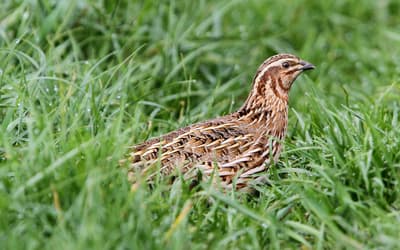
Defining Holobaramins of Order Galliformes Using Molecular Data
Marshall Jordan , et. al. • Aug. 6, 2025
The astonishing creative genius and power of God are displayed by the wonderful creatures he has made, especially the birds.

Center of Gravity Distinction Between Birds and Theropod Dinosaurs
Kevin Hadsall • July 2, 2025
Since the claimed transition of dinosaurs to birds necessitates that a land-based creature developed the ability to fly, aeronautical considerations such as center of gravity should be considered.
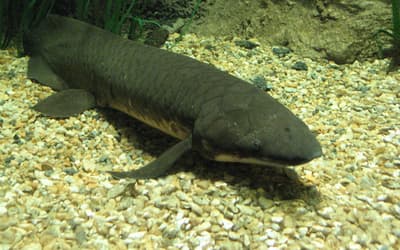
Lungfishes—Transitional Species, Fish, Amphibian, or Something Else?
Matthew Cserhati • May 7, 2025
Many modern fish are obligate air breathers, yet they are not on the alleged trajectory between sea and land organisms.

To the Ark, and Back Again? Using the Marsupial Fossil Record to Investigate the Post-Flood Boundary: A Reply
Chad Arment • Jan. 8, 2025
Chad Arment responds to Nathan Mogk’s 2025 critique of his 2020 marsupial migration model.

To the Ark, and Back Again? Using the Marsupial Fossil Record to Investigate the Post-Flood Boundary: A Comment
Nathan W. Mogk • Jan. 8, 2025
Nathan Mogk questions Chad Arment’s 2020 marsupial migration model.

Baraminology of Cucurbitaceae Based on Chloroplast Genome Analysis
Matthew Cserhati • Sept. 11, 2024
This study demonstrated how chloroplast genomes can be used to classify species into holobaramins.

University Skeleton and Brain Collections Fueled Darwinian Racism: Another Evil Fruit of Evolution Revealed
Dr. Jerry Bergman • June 12, 2024
Scientists behind the skeleton/organ collections firmly believed in human evolution. They were collecting specimens of “inferior races” to prove evolution, but the material did not support evolution.
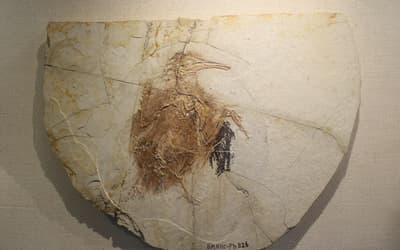
Are Birds Dinosaurs? A Critical Analysis of Fossil Findings
Reinhard Junker • April 24, 2024
The putative descent of birds from dinosaurs has become established as one of the most popular evolutionary transitions.

Bible-Based Knowledge (Science)
Richard Overman • Jan. 17, 2024
This paper proposes biblically based scientific philosophies as well as providing suggested mechanisms for the development of a bible-based scientific model for the four major scientific communities.
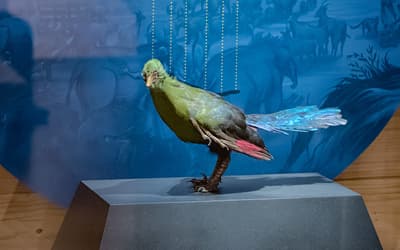
Reply to the “Response to ‘The Debate over Classification of Archaeopteryx as a Bird’”
Dr. Gabriela Haynes • Dec. 6, 2023
This paper aims to address some issues raised by McLain et al. (2023) in an article titled “Response to ‘The Debate over Classification of Archaeopteryx as a Bird.’”

Response to “The Debate over Classification of Archaeopteryx as a Bird”
Matthew McLain , et. al. • Dec. 6, 2023
Matthew McLain, Dr. Marcus Ross, Matt Petrone, Noël Lay, and Matthew Speights take issue with Dr. Gabriela Haynes’ 2022 discussion of the difference between birds and dinosaurs.

Chewing and Swallowing: Examining the Complex Design of These Coordinated Systems
Dr. Jerry Bergman • Sept. 6, 2023
This paper evaluates the evidence for the evolution of animal food intake systems.

“What Is a Woman?” The Biological Case for Two Genders
Dr. Daniel Howell • Dec. 28, 2022
Biological sex is grounded in anatomy, physiology, and genetics. Here, I describe why—biologically—there are only two sexes (= genders) and why true sex reassignment is impossible.

The Debate over Classification of Archaeopteryx as a Bird
Dr. Gabriela Haynes • Sept. 14, 2022
Based on several findings, no reason remains for Archaeopteryx to be classified as anything other than a bird.
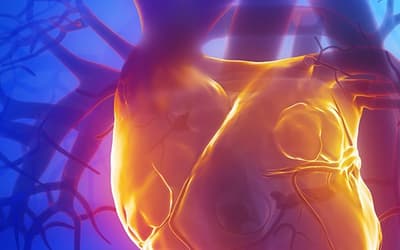
Heart Evolution: The Four Heart Types Are Unbridgeable by Evolution
Dr. Jerry Bergman • June 8, 2022
Not even plausible “just-so” stories are proposed to explain how one heart system evolved into a different system. Evolution is unable to explain their origin.

Facts Cannot be Ignored When Considering the Origin of Life #3: Necessity of Matching the Coding and the Decoding Systems
Change Laura Tan • March 23, 2022
DNA, however long it is and however many genes it can encode, is nothing without the molecular machineries to decode its encoded genes.

Facts Cannot Be Ignored When Considering the Origin of Life #2: Challenges in Generating the First Gene-encoding Template DNA or RNA
Change Laura Tan • March 23, 2022
This article argues that it is practically impossible to generate the first DNA (or RNA) template abiotically.

Facts Cannot Be Ignored When Considering the Origin of Life #1: The Necessity of Bio-monomers Not to Self-Link for the Existence of Living Organisms
Change Laura Tan • March 9, 2022
The required automatic self-linking of monomers for abiogenesis is incompatible with the genetic information coding and decoding system that is necessary for life.

The Problem of Over-Design for Darwinism
Dr. Jerry Bergman • Feb. 23, 2022
The case for over-design is reviewed focusing on documented cases of normal persons that have exceptional abilities.

The Evolution of Asexual to Sexual Reproduction: The Queen of Evolutionary Problems
Dr. Jerry Bergman • Dec. 15, 2021
The evidence is overwhelming and widely recognized by evolutionists that evolution by small steps cannot bridge the transition from asexual to sexual reproduction.

Revising Hominin Baraminology with Medoid Partitioning and Fuzzy Analysis
P. Sinclair , et. al. • Nov. 3, 2021
Creationist disagreement over the status of hominin fossils is unlikely to be resolved here, but Reeves’s recommendations bring alternative tools to baraminology that have not been applied.
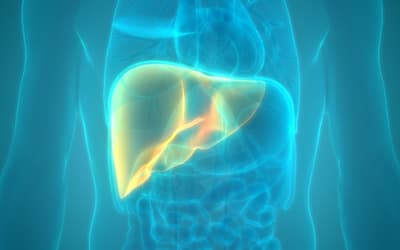
Liver Evolution Claims Fail
Dr. Jerry Bergman • Oct. 20, 2021
An enormous unbridgeable gap exists between invertebrates, who do not have livers, and vertebrates, who cannot live without them.

One of the Most Widely Used Quotes by D. M. S. Watson Vindicated
Dr. Jerry Bergman • Oct. 13, 2021
Critics have attempted to negate the effect of a common quote that evolution is accepted mainly because the only alternative, special creation, is unacceptable.
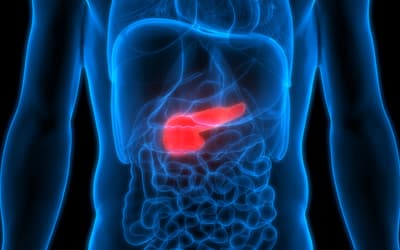
Evolution of the Pancreas
Dr. Jerry Bergman • Oct. 6, 2021
All vertebrate pancreases have an endocrine function producing insulin, glucagon, and somatostatin hormones, as well as exocrine functions producing digestive enzymes.

The Spleen, Once Regarded as Vestigial, Now Recognized as a Critically Important Organ
Dr. Jerry Bergman • June 30, 2021
The spleen is now acknowledged to be a critical organ serving at least six different important functions.

Using Stromatolites to Rethink the Precambrian-Cambrian Pre-Flood/Flood Boundary
Ken P Coulson • May 5, 2021
Many creationists are actively engaged in finding the Flood/post-Flood boundary, but most creationists consider the Precambrian-Cambrian contact more attractive.
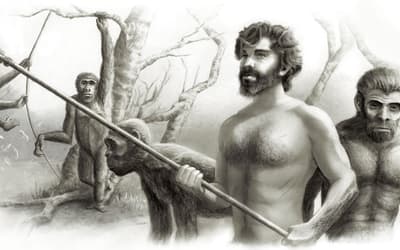
Evolution of the Vertebrate Kidney Baffles Evolutionists
Dr. Jerry Bergman • Feb. 24, 2021
An unbridgeable gap exists between the simple urinary system used in invertebrates and the far more complex kidney system used in all vertebrates.

Implications of Creation Biology for a Neogene-Quaternary Flood/Post-Flood Boundary
Chad Arment • Nov. 4, 2020
While several current Flood models posit an Upper Cenozoic Flood Boundary, none of them address the problem of biblical kinds and their relationship Genesis.

Louis Agassiz and Alexander Winchell: Two Case Histories of Creationists Who Illustrate That Rejecting Genesis Influences the Acceptance of Racism
Dr. Jerry Bergman • Sept. 23, 2020
Theories that attempted to harmonize evolution and the Scriptures gave birth to, and perpetuated, a form of scientific racism based on Darwinism.

Inerrancy and Biblical Authority: How and Why Old-Earth Inerrantists Are Unintentionally Undermining Inerrancy
Dr. Terry Mortenson • Sept. 16, 2020
The old-earth signers of the CSBInerrancy unintentionally violated their own principles of interpretation and unintentionally undermined the inerrancy and the authority of Scripture.

Darwin’s Views of Women Had a Considerable Effect on Society
Dr. Jerry Bergman • April 29, 2020
This review has two goals, to document from Darwin’s writings that he believed women were inferior to men, and to document that his views greatly influenced modern academia and evolutionists.

To the Ark, and Back Again? Using the Marsupial Fossil Record to Investigate the Post-Flood Boundary
Chad Arment • April 8, 2020
There is no debate as contentious as the post-Flood boundary issue within creation science.

Responding to Lightner’s Comments on Natural Selection: Points of Agreement and Disagreement
Dr. Jason Lisle • Jan. 30, 2019
My paper was criticizing what Guliuzza has publicly written in which he denies the reality of natural selection: a claim that he has never publicly retracted.
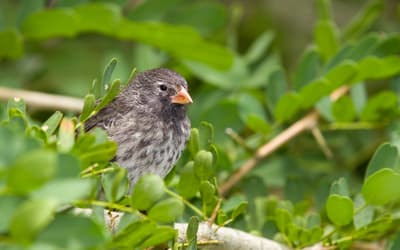
Dubious Claims About Natural Selection
Dr. Jean Lightner • Jan. 30, 2019
This brief examination of Jason Lisle’s paper highlights that misunderstanding about natural selection is more prevalent among creationists than he suggests.
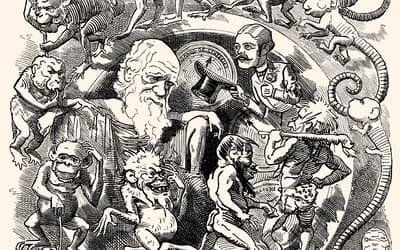
Response to “Still No Replacement of Darwin: A Reply to Nathaniel Jeanson’s Response to My Review of Replacing Darwin—The New Origin of Species”
Dr. Nathaniel T. Jeanson • Nov. 21, 2018
Frello’s recent critique is helpful progress in our discussion, and it argues for the strength of the science in Replacing Darwin.

Still No Replacement of Darwin—A Reply to Nathanial Jeanson’s Response to my Review of Replacing Darwin—The New Origin of Species
Stefan Frello • Nov. 21, 2018
I used to think that when creationists talk about creation and evolution as a clash between worldviews, they were wrong. Jeanson has helped me change my mind.
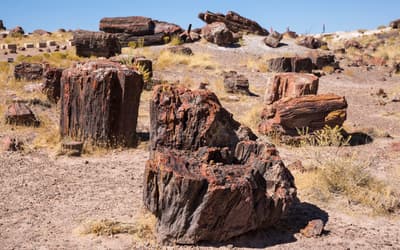
Fossil Grove and other Paleozoic Forests as Allochthonous Flood Deposits
Kurt P. Wise • Nov. 7, 2018
Fossil Grove offers multiple evidences in support of a huge forest biome floating atop the world’s pre-Flood oceans.

Living Evidence of a Global Catastrophe: How Microbial Biogeography Supports Noah’s Flood
Dr. Andrew Fabich • Oct. 17, 2018
The biblical account of Noah’s Flood provides an update to modern microbial biogeography and modern creation apologetics.

A Light and Electron Microscopic Study of the Palo Verde Tree of the Desert Southwest
Mark Armitage , et. al. • Sept. 19, 2018
The palo verde tree is well known to residents of the desert southwest and Mexico, yet there are few studies of it in the technical literature.

Comparison of 18,000 De Novo Assembled Chimpanzee Contigs to the Human Genome Yields Average BLASTN Alignment Identities of 84%
Jeffrey P. Tomkins • Sept. 5, 2018
Results from this study negate the concept of the 98.5% DNA similarity myth and highlight the extremely flawed and humanized nature of the panTro4 version of the chimpanzee genome.
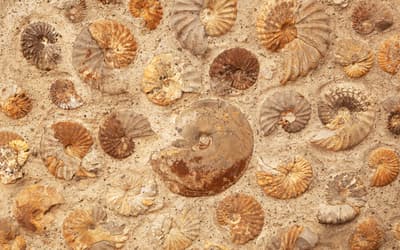
A Preliminary Cephalopod Baraminology Study Based on the Analysis of Mitochondrial Genomes and Morphological Characteristics
Jean O’Micks • Aug. 22, 2018
Cephalopods, including octopuses, squids, cuttlefish, and nautiluses, are underrepresented in both genome sequencing projects as well as baraminology studies.
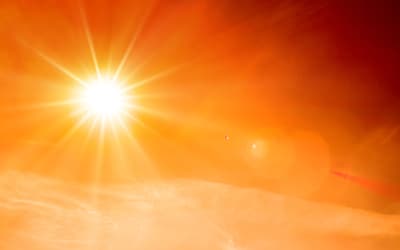
Heat Problems Associated with Genesis Flood Models—Part 1: Introduction and Thermal Boundary Conditions
William Worraker • July 11, 2018
The Genesis Flood produced drastic geological changes involving extremely energetic processes which also generated an enormous heat load.
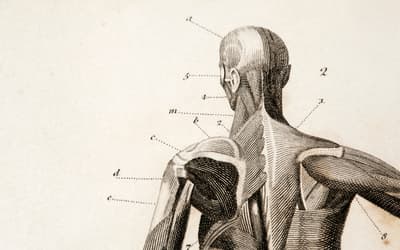
Biblical Integration in Anatomy and Physiology: A Design Approach
Elizabeth Sled • June 20, 2018
We have been created fearfully and wonderfully by our Creator God, and the human body showcases God’s intricate design.
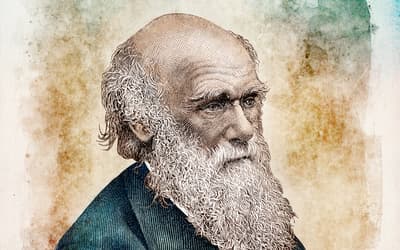
Response to “No Replacement of Darwin: A Review of Replacing Darwin—The New Origin of Species”
Dr. Nathaniel T. Jeanson • April 25, 2018
Ironically, Frello has actually done me a great favor; his review ends up bolstering my original claims.

No Replacement of Darwin
Stefan Frello • April 25, 2018
Jeanson takes on a formidable task: To show that the theory of evolution is wrong, and to replace it with biblical creation. To make it short: Jeanson fails.

The Origin of Beauty: Contrasting the Handicap Hypothesis and Design Theory
David Woetzel • Dec. 13, 2017
Why should there be such “gratuitous beauty”? The plethora of extravagant biological characteristics prominently call out for an explanation.

Book Review of Almost Human, the Astonishing Tale of Homo naledi and the Discovery that Changed our Human Story, by Lee Berger and John Hawks
Jean O’Micks , et. al. • Aug. 30, 2017
We review four main sections of the book starting with his first trip to Tanzania, H. floresiensis, Australopithecus sediba, and Homo naledi.

Debunking the Debunkers
Jeffrey P. Tomkins • Feb. 8, 2017
Taken together, genomic data for both the alleged fusion and cryptic centromere sites refute the concept of fusion in a human-chimpanzee common ancestor.
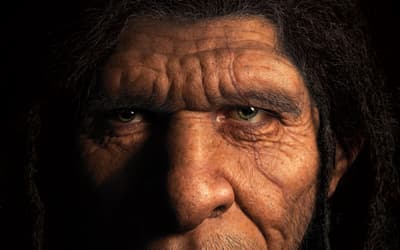
Homo naledi Probably Not Part of the Human Holobaramin Based on Baraminic Re-Analysis Including Postcranial Evidence
Jean O’Micks • Oct. 26, 2016
With the inclusion of 37 postcranial morphological characters, this work attempts to reassess the baraminic classification of H. naledi.
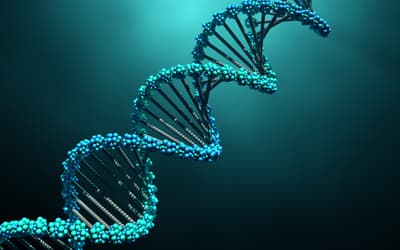
Beyond the DNA-Protein Paradox: A “Clutch” of Other Chicken-Egg Paradoxes in Cell and Molecular Biology
Derrick M. Glasco • Aug. 31, 2016
The DNA-protein paradox has long been a point of contention in the origin of life debate.

Big Gaps and Short Bridges: A Model for Solving the Discontinuity Problem
Change Laura Tan • July 6, 2016
This paper argues that the issue with the origin of life and the origin of biodiversity is not an issue of time, though deep time is problematical.
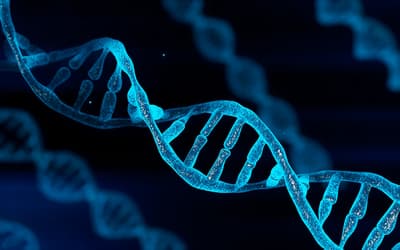
On the Origin of Human Mitochondrial DNA Differences, New Generation Time Data Both Suggest a Unified Young-Earth Creation Model and Challenge the Evolutionary Out-of-Africa Model
Dr. Nathaniel T. Jeanson • April 27, 2016
These results underscore the biblical model of human origins and simultaneously undercut the validity of the evolutionary out-of-Africa model.
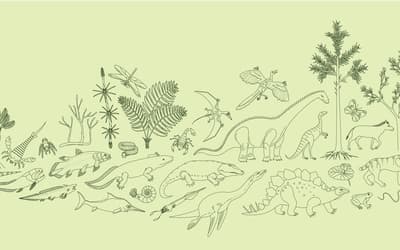
On the Origin of Eukaryotic Species’ Genotypic and Phenotypic Diversity
Dr. Nathaniel T. Jeanson , et. al. • April 20, 2016
This study shows that created heterozygosity, together with natural processes that are observable, is sufficient to account for species’ diversity.

Using Taxonomically Restricted Essential Genes to Determine Whether Two Organisms Can Belong to the Same Family Tree
Change Laura Tan • Nov. 4, 2015
How are all life forms connected? Are they linked by one giant family tree, a web, or a forest of family trees?

Challenging the BioLogos Claim that a Vitellogenin (Egg-Laying) Pseudogene Exists in the Human Genome
Jeffrey P. Tomkins • Oct. 21, 2015
Interestingly, BioLogos is probably the only evolutionary group that puts such a high level of focus on this hypothesis as key evidence for evolution.
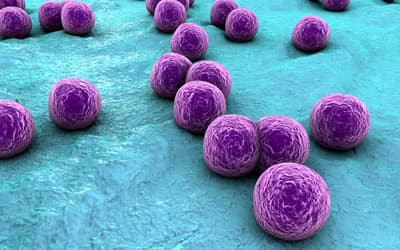
The Genesis and Emergence of Community-Associated Methicillin-Resistant Staphylococcus aureus (CA-MRSA): An Example of Evolution in Action?
Dr. Alan L. Gillen , et. al. • Oct. 14, 2015
We have seen a changing profile from HA-MRSA to CA-MRSA. This is potentially dangerous because the new strains are more virulent and aggressive.

Is HIV-1 Losing Fitness Due to Genetic Entropy?
Yingguang Liu • July 1, 2015
HIV-1 is an important example which shows genetic entropy operating throughout the biological realm, even while meaningful genetic adaptations are occurring.
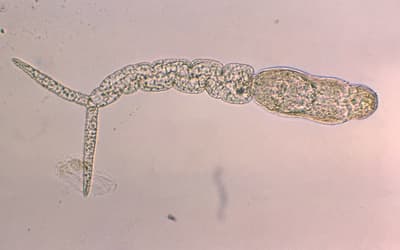
A Baraminic Study of the Blood Flukes of Family Schistosomatidae
Dr. Matthew E. Ingle , et. al. • June 24, 2015
This paper aims to determine the number of created kinds in this family of parasites, the original hosts, and what produced current species.

Mutations in the nef Gene make HIV-1 More Virulent
Yingguang Liu • June 17, 2015
Mutational degeneration of the nef gene manifests as increased pathogenicity of HIV-1.

Mitochondrial DNA Clocks Imply Linear Speciation Rates Within “Kinds”
Dr. Nathaniel T. Jeanson • June 3, 2015
The mechanism of speciation remains one of the most contested scientific questions among both evolutionists and creationists.

Cyclic Selection in HIV–1 Tropism: Microevolution That Is Going Nowhere
Yingguang Liu • April 29, 2015
The molecular interaction of HIV-1 is merely cyclic fine-tuning of an existing function and illustrates the broken relationship between the virus and the host.
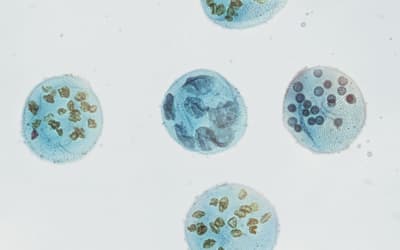
Information Processing Differences Between Bacteria and Eukarya—Implications for the Myth of Eukaryogenesis
Change Laura Tan , et. al. • March 25, 2015
Based on differences in gene sets and molecular machines between bacteria and eukarya, we continue to demonstrate that unbridgeable evolutionary chasms exist.

Information Processing Differences Between Archaea and Eukarya—Implications for Homologs and the Myth of Eukaryogenesis
Change Laura Tan , et. al. • March 18, 2015
In the grand evolutionary paradigm, the origin of the eukaryotic cell represents one of the great mysteries and key hypothetical transitions of life.
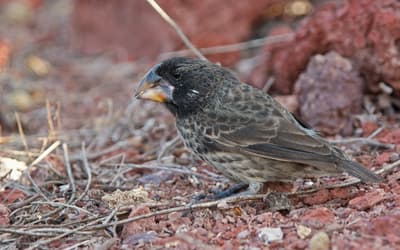
Reply to “A Response to ‘Does Natural Selection Exist?’”
Dr. Nathaniel T. Jeanson • Nov. 5, 2014
In this three-part ~35,000-word response, Guliuzza (2014a, b, c) fails to clearly define his terms and/or use them consistently.

A Response to “Does Natural Selection Exist?”: Creatures’ Adaptation Explained by the Design-based, Organism-driven Approach: Part 3
Randy J. Guliuzza • Nov. 5, 2014
This third installment is a continuation of my response to a recent critical paper (Jeanson 2013).

A Response to “Does Natural Selection Exist?”: Creatures’ Adaptation Explained by the Design-based, Organism-driven Approach: Part 2
Randy J. Guliuzza • Oct. 29, 2014
This second installment is a continuation of my response to a recent critical paper (Jeanson 2013) on a series of Acts & Facts articles.
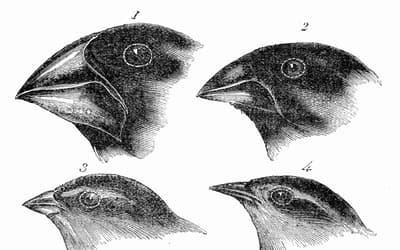
A Response to “Does Natural Selection Exist?”: Creatures’ Adaptation Explained by the Design-based, Organism-Driven Approach: Part 1
Randy J. Guliuzza • Oct. 29, 2014
This paper responds to a 2013 Jeanson paper critical of a series of Acts & Facts articles published by the Institute for Creation Research (ICR).

Fossil Baramins on Noah’s Ark: The “Amphibians”
Dr. Marcus Ross • Sept. 17, 2014
When added to previously determined kinds of extant anurans, caudates, and gymnophionans, a total of 248 amphibian kinds may have been brought on board the Ark.
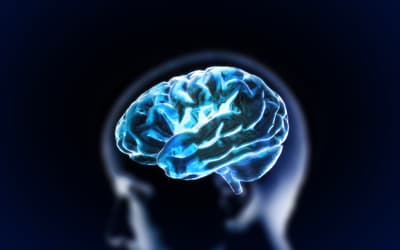
Christians, the Brain, and Person: Conceptual Confusion, Unintelligibility, and Implications
Callie Joubert • June 11, 2014
That psychological properties can be attributed to a brain is a popular notion, even among Christians. This paper argues that such claims are incorrect.
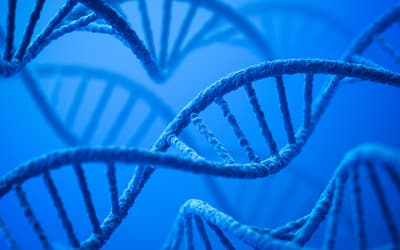
The Human GULO Pseudogene—Evidence for Evolutionary Discontinuity and Genetic Entropy
Jeffrey P. Tomkins • April 2, 2014
Modern genomics provides the ability to screen the DNA of a wide variety of organisms to scrutinize broken metabolic pathways. This data has revealed wide-spread genetic entropy in human genomes.
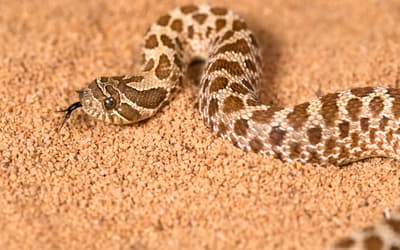
An Initial Estimate toward Identifying and Numbering Extant Tuatara, Amphisbaena, and Snake Kinds
Tom Hennigan • Feb. 19, 2014
The purpose of this paper is to use all available information in order to make an initial estimate of the identification and numbers of extant Lepidosaur kinds, except for the “lizards.”

An Initial Estimate toward Identifying and Numbering the Ark Turtle and Crocodile Kinds
Tom Hennigan • Jan. 8, 2014
Biosystematics is in great flux today because of the plethora of genetic research continually shedding light on organism relationships.
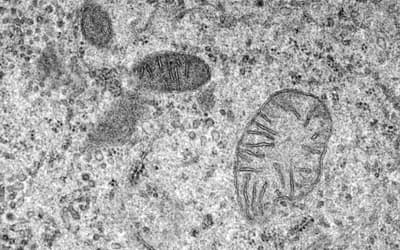
Recent, Functionally Diverse Origin for Mitochondrial Genes from ~2700 Metazoan Species
Dr. Nathaniel T. Jeanson • Dec. 11, 2013
The young-earth creation model currently lacks a robust explanation for molecular diversity.

An Initial Estimate of Avian Ark Kinds
Dr. Jean Lightner • Nov. 27, 2013
This paper will focus on identifying extant bird kinds.
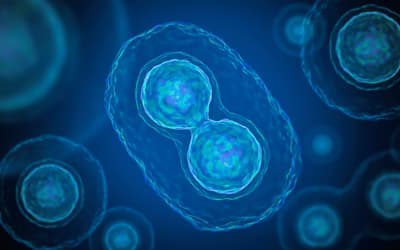
Chimeras, Cybrids, and Hybrids: A Christian’s Observations and Critique of Some Aspects of the Controversy Involving the Mixing of Human and Animal Materials for Scientific Research
Callie Joubert • Sept. 18, 2013
On July 22, 2011, some readers of the Daily Mail UK were stunned by news that “Scientists have created more than 150 human-animal embryos in British laboratories.”

The Human Beta-Globin Pseudogene Is Non-Variable and Functional
Jeffrey P. Tomkins • Aug. 21, 2013
The HBBP1 gene appears to be a highly functional and cleverly integrated feature of the human genome that is intolerant of mutation.

Does Natural Selection Exist?
Dr. Nathaniel T. Jeanson • Aug. 7, 2013
How did the modern diversity of life arise from the created kinds of Genesis 1 and from the kinds taken on board the Ark? Did natural selection play a role?

Did Death of Any Kind Exist Before the Fall?
Simon Turpin • April 3, 2013
Death, whether animal or human, physical or spiritual, is a consequence of man’s disobedience toward his Creator and an intrusion into His “very good” creation.

Evangelical Commentaries on the Days of Creation in Genesis One
Simon Turpin • March 20, 2013
This paper will evaluate and critique six commentaries and the reasons they give for not taking the days of creation literally.

German and American Eugenics in the Pre-World War 1 Era
Danae Mcgregor • March 6, 2013
Before the traumatic devastation of the Nazi genocides, eugenics theory was widely accepted by both German and American scientists, especially in the pre-World War 1 era.
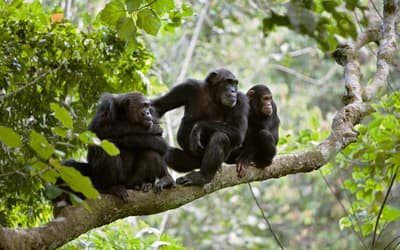
Comprehensive Analysis of Chimpanzee and Human Chromosomes Reveals Average DNA Similarity of 70%
Jeffrey P. Tomkins • Feb. 20, 2013
A common evolutionary claim is that the DNA of chimpanzees and humans are nearly identical. Modern DNA research is showing much higher levels of discontinuity.
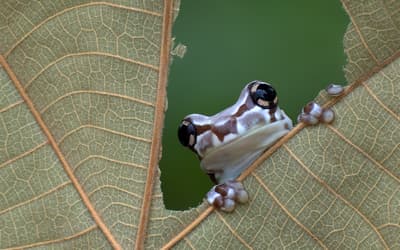
An Initial Estimate Toward Identifying and Numbering Amphibian Kinds within the Orders Caudata and Gymnophiona
Tom Hennigan • Jan. 23, 2013
An initial attempt to count and identify biblical kinds in amphibian orders Caudata and Gymnophiona were estimated using current information and several key assumptions and guidelines.

Evolutionary Psychology: Why It Fails as a Science and Is Dangerous
Callie Joubert • Dec. 19, 2012
Christians and the public at large cannot afford to accept what they are being told about themselves from the perspective of evolutionary psychology.

Is Young-Earth Creationism a Bad Choice?
Callie Joubert • Nov. 14, 2012
Any understanding of Scripture that excludes or indicts the divine Himself is necessarily flawed and false.
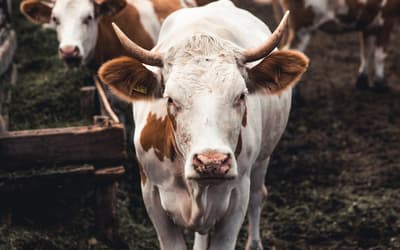
Mammalian Ark Kinds
Dr. Jean Lightner • Oct. 31, 2012
Information on the class Mammalia was evaluated in an attempt to get a realistic estimate of what mammalian kinds would have been represented on the Ark.
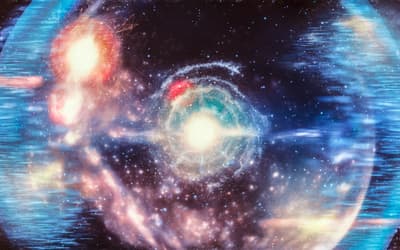
The Unbeliever at War with God: Michael Ruse and the Creation-Evolution Controversy
Callie Joubert • Sept. 5, 2012
The evidence to be considered will indicate that a fear of God and afterlife play a major role in the psychology of unbelief, and that points toward the realism of Scripture.

Review of John Lennox’s Book Seven Days That Divide the World: The Beginning According to Genesis and Science
Simon Turpin • June 27, 2012
Lennox reasons that the church has been wrong in the past over its interpretation of Scripture in light of scientific discovery, and that those holding to a young earth are wrong again.
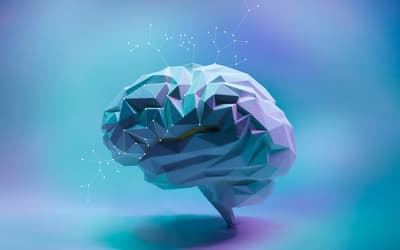
What Makes Us Human, and Why It Is Not the Brain: A Creationist Defense of the Soul: Discussion
Darrell Estabrook • June 13, 2012
Certainly there is more to humans than a complex brain architecture from which a mind would seem to emerge. However, this reader has two difficulties.
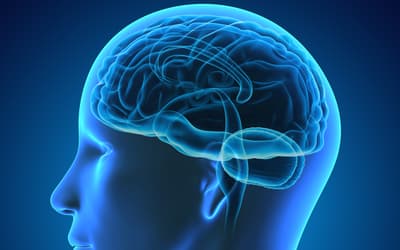
What Makes Us Human, and Why It Is Not the Brain: A Creationist Defense of the Soul: Reply
Callie Joubert • June 13, 2012
To depart from Scripture at any point is neither safe nor right. Thus Estabrook’s discussion of my paper (Joubert 2011) in which he expressed his difficulties with my defense of the soul is welcome.
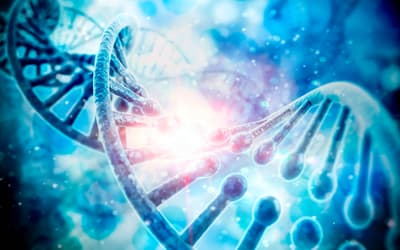
An Evaluation of the Myth That “Nothing in Biology Makes Sense Except in the Light of Evolution”
Dr. Jerry Bergman • Feb. 8, 2012
I reviewed both the textbooks used for life science classes at the college where I teach and those that I used in my past university course work.

Genome-Wide DNA Alignment Similarity (Identity) for 40,000 Chimpanzee DNA Sequences Queried against the Human Genome is 86–89%
Jeffrey P. Tomkins • Dec. 28, 2011
To provide a global set of analyses, large-scale comparative DNA sequence alignments between the chimpanzee and human genomes were performed with the BLASTN algorithm.
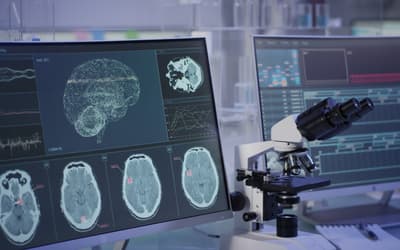
What Makes Us Human, and Why It Is Not the Brain: A Creationist Defense of the Soul
Callie Joubert • Dec. 14, 2011
A Christian view of the world entails that science is not a Christian’s ultimate or sole source of knowledge and the physical world is not the only world there is.
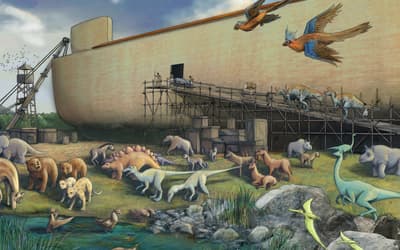
Determining the Ark Kinds
Dr. Jean Lightner , et. al. • Aug. 1, 2014
This research effort provides information necessary for the best possible reconstruction of the animal kinds preserved on the Ark for the Ark Encounter.

Adam, Free Choice, and the Cause of Sin: A Creationist Response to a Christian Evolutionist
Callie Joubert • Oct. 26, 2011
This paper will show that Christian professor Daniel Brannan’s arguments are based on faulty premises regarding Adam’s constitutional nature, the nature of Adam’s perfection and Adam’s free choice.
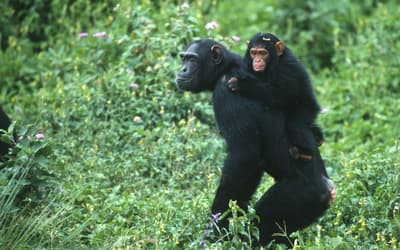
Response to Comments on “How Genomes are Sequenced and Why it Matters: Implications for Studies in Comparative Genomics of Humans and Chimpanzees”
Jeffrey P. Tomkins • Sept. 14, 2011
The author believes that his use of the Y-chromosome comparison example was misinterpreted and desires to clarify.

Emergentism and the Rejection of Spirit Entities: A Response to Christian Physicalists
Callie Joubert • Aug. 10, 2011
Emergentism defies commonsense; there is also no scientific evidence that something material could produce an entity of a kind radically different from itself.
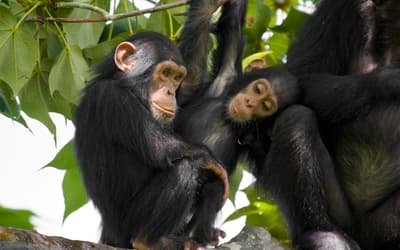
How Genomes are Sequenced and Why it Matters: Implications for Studies in Comparative Genomics of Humans and Chimpanzees
Jeffrey P. Tomkins • June 22, 2011
When evaluating comparisons between genomes using DNA sequence, it is important to understand the nature of how that sequence was obtained and bioinformatically manipulated before drawing conclusions.
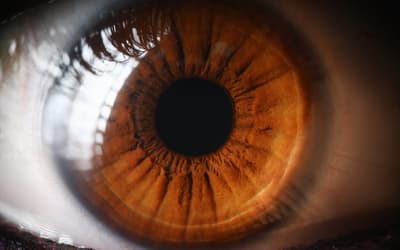
The Human Retina Shows Evidence of Good Design
Dr. Jerry Bergman • June 8, 2011
Darwinists try to disprove the argument from design by providing examples of what they claim are poor design.
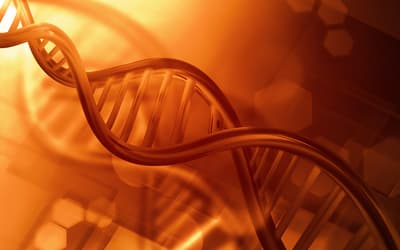
Toward an Accurate Model of Variation in DNA
Mitchel Soltys • March 2, 2011
The Bible’s description of created kinds implies an information model which uses variables. The findings in this paper show that a model which uses variables forms a basis for understanding biology.

Is the Sodium Chloride Level in the Oceans Evidence for Abiogenesis?
Dr. Jerry Bergman • Sept. 1, 2010
This paper examines this assumption and finds the evidence shows that the levels of salinity in seawater and human blood are markedly different.
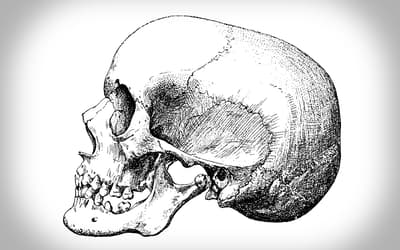
Baraminological Analysis Places Homo habilis, Homo rudolfensis, and Australopithecus sediba in the Human Holobaramin: Discussion
Dr. David A. DeWitt , et. al. • Aug. 25, 2010
A discussion on a previous ARJ paper in regard to Australopithecus sediba and its classification.

Why Orthodox Darwinism Demands Atheism
Dr. Jerry Bergman • July 28, 2010
A conflict exists between modern neo-Darwinism and orthodox biblical Christianity.
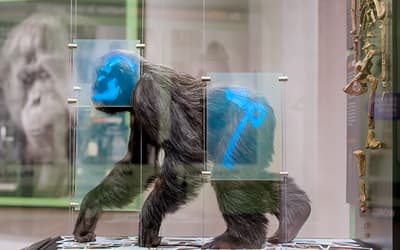
Baraminological Analysis Places Homo habilis, Homo rudolfensis, and Australopithecus sediba in the Human Holobaramin
Todd Charles Wood • May 5, 2010
This present study should end charges against creationists that classification of australopiths as human or ape is arbitrary and meaningless.

Inherit the Wind
Dr. Jerry Bergman • March 31, 2010
Although the play was widely believed to be an accurate synopsis of the historical trial, often called the Trial of the Century, it grossly distorted the actual events of history.
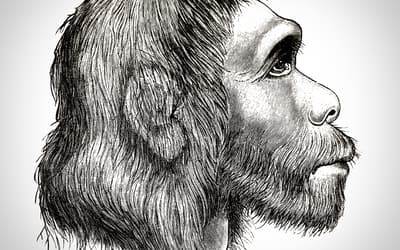
Those Enigmatic Neanderthals
Anne Habermehl • Jan. 13, 2010
Young-earth creationists rightly consider that Neanderthals were human, but are divided on various issues.

Fraud and Forgery in Paleoanthropology
Dr. Jerry Bergman • Dec. 23, 2009
A review of the history of paleoanthropology leads to the conclusion that the discipline is far less objective than that for physics, chemistry, or even biology.

Towards a Creationary Classification of Mutations
Jonathan Bartlett • Dec. 2, 2009
Mutations are normally classified according to their proximal effect on an organism’s fitness, whether beneficial, deleterious, or neutral.
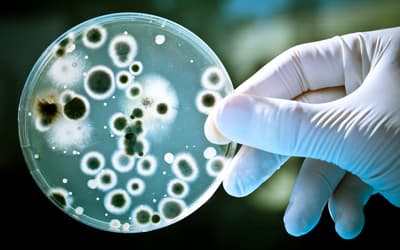
The Role of Genomic Islands, Mutation, and Displacement in the Origin of Bacterial Pathogenicity
Dr. Georgia Purdom • Oct. 28, 2009
Bacteria are mostly beneficial, even though a minority are known as pathogens. They are necessary for natural processes such as human digestion and biogeochemical cycling.

Fungi from the Biblical Perspective
Ira Loucks • Oct. 21, 2009
Fungi are intriguing organisms with a wealth of diversity in their morphology and ecology. Determining the fundamentals of their biology from a biblical perspective is a daunting but achievable task.
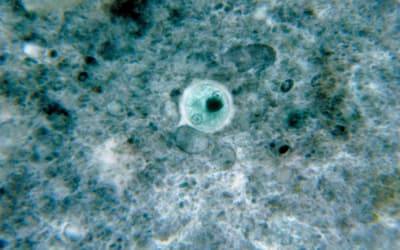
A Possible Function of Entamoeba histolytica in the Creation Model
Frank Sherwin • Oct. 14, 2009
There is a need for parasites such as Entamoeba histolytica to be addressed from a biblical perspective that may include their original symbiotic or mutualistic association in man.

A Review of Mitoribosome Structure and Function Does not Support the Serial Endosymbiotic Theory
Daniel Criswell • Oct. 7, 2009
It is apparent from the knowledge gained about mitochondria ribosome structure and function since the proposal of the Serial Endosymbiosis Theory that prokaryotes are not the ancestors of eukaryotes.
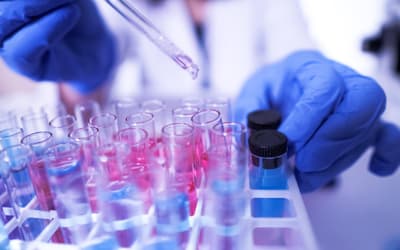
The Natural History of Retroviruses
Yingguang Liu , et. al. • Sept. 30, 2009
Evolutionists assume that all endogenous retroviruses are remnants of germ line infection by exogenous retroviruses.
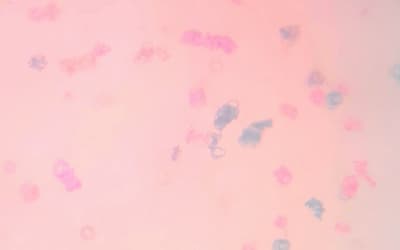
More Abundant than Stars
Dr. Georgia Purdom , et. al. • Sept. 23, 2009
Microbes form a life-sustaining organosubstrate on earth and contribute to our understanding of geology, ecology, and biology.
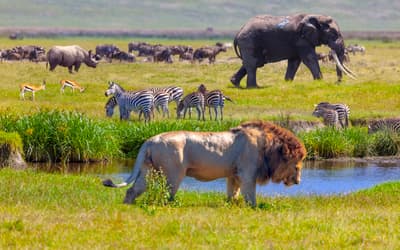
Genetics of Coat Color II
Dr. Jean Lightner • June 10, 2009
Recognizing the population bottleneck which occurred in land animals at the time of the Flood, it is clear that genetic variation was once more limited than it is today.

Toward An Understanding of Arbuscular Mycorrhizal Fungi
Tom Hennigan • Feb. 18, 2009
As we seek to discover the intent of the Designer, we can enhance our stewardship of the land by using this symbiosis to re-establish polluted and disturbed landscapes and grow sustainable crops.

There Is No Darwin Conspiracy
Todd Charles Wood • Jan. 28, 2009
Some contend that Charles Darwin plagiarized his theory of evolution. Whether you agree with the man or not, however, the evidence suggests the idea is his.

The Origin of Oil—A Creationist Answer
John Matthews • Dec. 17, 2008
The dominant view of the origin of oil amongst western oil companies until 1969 was that it was due to the decay of living matter. Now other views are making themselves heard.

Bacterial Attenuation and its Link to Innate Oncolytic Potential
Luke Kim • Oct. 15, 2008
Although bacteria have been mainly recognized as disease causing agents, there are abundant scientific evidences that bacterial pathogenicity is not the major biological function of bacteria.

Genetics of Coat Color I
Dr. Jean Lightner • Oct. 8, 2008
Given the number of alleles within baramins, much of the diversity at this locus must have developed since the genetic bottleneck at the Flood where only a single breeding pair was preserved.

Karyotype Variability within the Cattle Monobaramin
Dr. Jean Lightner • June 11, 2008
Chromosomal rearrangements, particularly centric fusions, have played an important role in developing the chromosomal patterns that are seen in cattle today.

Louis Pasteur’s Views on Creation, Evolution, and the Genesis of Germs
Dr. Alan L. Gillen , et. al. • Dec. 27, 2020
Shortly after Darwin published On the Origin of Species, Pasteur began to challenge the idea of spontaneous generation.

An Apology and Unification Theory for the Reconciliation of Physical Matter and Metaphysical Cognizance
Desmond Allen • Feb. 27, 2008
Because one is tangible and the other intangible, the physical and metaphysical are generally treated separately. But this dichotomy is illogical.
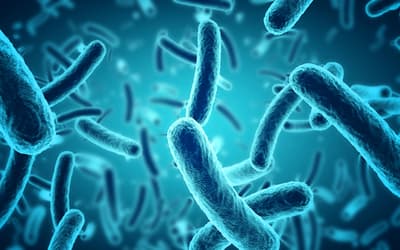
Microbes and the Days of Creation
Dr. Alan L. Gillen • Jan. 16, 2008
The world of germs and microbes has received much attention in recent years. But where do microbes fit into the creation account?

Proceedings of the Microbe Forum, June 2007
Dr. Joe Francis , et. al. • Jan. 9, 2008
For many years the roles of microbes as part of God’s wonderful design have been neglected. Perhaps it is because many people associate microbes as the cause of death, disease, and suffering.
Biology on Answers Research Journal
According to one evolutionary biologist, “nothing in biology makes sense, except in light of evolution.” It’s a well-known trope, but is it accurate? According to Scripture, God made all living things within six days. Evolution and the biblical account of creation are fundamentally incompatible. Evolutionists recognize this and do their best to silence anyone who disagrees and to “evangelize” Christians away from biblical authority.
The goal of the Answers Research Journal (ARJ) for biology is to uphold the biblical account of creation via biological principles. Our professional, peer-reviewed papers make a strong case for the historicity of Genesis and the accuracy of Scripture from the very first verse. ARJ includes papers discussing various aspects of creation-related biological research, including original research, meta-analysis, and philosophy of biology.
Biology, per se, is not discussed much in Scripture. Genesis 1 tells us some details of how God created, and sprinkled throughout are little details that can be gleaned. It does, however, clearly rule out any form of molecules-to-man evolution. Creation biologists thus have wide-open areas for research that are not restricted by philosophical baggage.
In seeking to understand the world from a biblical perspective, ARJ will publish papers in biological research and consider both biblical and non-biblical sources to expound on what is true and what we can understand in light of the unfathomable depths of this rich field. This page will feature all of the biological research published in Answers Research Journal.
